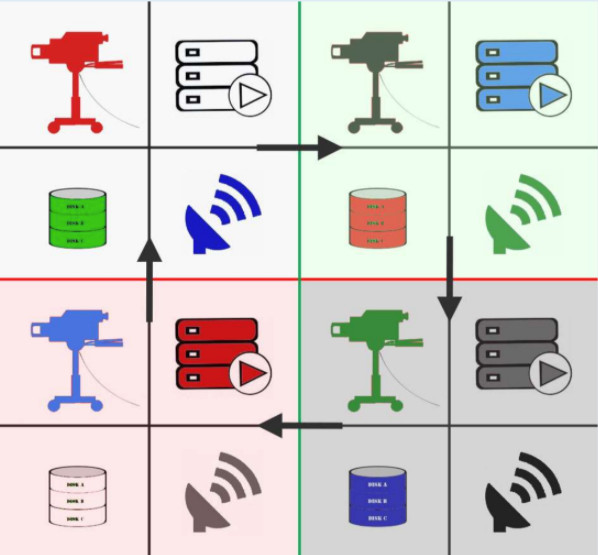White Paper: Achieving High Availability in Television Broadcast Systems
This paper will demonstrate how redundant components or systems, when implemented correctly, can significantly increase the system availability or uptime.

“Are we still on-air?” is a question we all dread when a failure occurs. A typical broadcast system is active or on-air 24 hours a day, 7 days a week. This includes linear playout systems such as broadcast networks and streaming channels as well as on-demand systems where consumers expect instant access to media content. We strive to maximize system uptime while minimizing capital and expense costs. Ideally every piece of equipment, whether it is on-premise or in the cloud, has at least one redundant hot backup but this is usually not feasible.
Financially, a broadcast system cannot be treated like corporate email or a web site in the sense that any broadcast downtime can result in lost revenues. If e-mail or internet access becomes inaccessible for a short period of time, it may be an inconvenience and in some cases a web-site service disruption is an opportunity lost for potential sales. Broadcasters must implement all measures possible, within reason, to keep systems on-line as revenue depends on keeping these systems operational.
A broadcast system is made up of various technologies, each with its own set of considerations. Most facilities still have traditional audio, video and plant reference systems including routing, processing, mixing and switching equipment. File-based workflows move and process media such as programs, promos or commercials from edit environments to play-to-air systems or from near or off-line storage to video servers.
These systems are less susceptible to short outages as their workflows are usually completed well ahead of their scheduled broadcasts. While this paper will not discuss the impact of different levels of impairment to the business in detail, in the examples of these workflows, a component or system failure of several seconds, minutes or even hours could be tolerated depending upon how soon before air-time the failure occurs.
It is therefore the “real-time” systems that need to be protected from failures. This would include the baseband or streaming playout systems, the live contribution, distribution and support systems that keep the content on-line and functioning properly. Managing failures is a very powerful method of reducing downtime which goes hand-in-hand with deciding where to best implement failure mitigation. This paper will demonstrate how redundant components or systems, when implemented correctly, can significantly increase the system availability or uptime.
The white paper can be downloaded here.
Get the TV Tech Newsletter
The professional video industry's #1 source for news, trends and product and tech information. Sign up below.
Jay Bergman is a technology leader with over 30 years of experience in the broadcast industry where he served in various executive positions at CBS including VP of Engineering. Jay specializes in the convergence of broadcast, IT and cloud technologies. He played a major role in the rollout of HDTV, directed the design and implementation of the CBS Media Distribution Center in NYC and LA and oversaw the implementation of the first CBS cloud-based broadcast channel. Jay has a B.S. in Electrical Engineering from Lehigh University and a Master’s in Business Administration from New York Institute of Technology.
